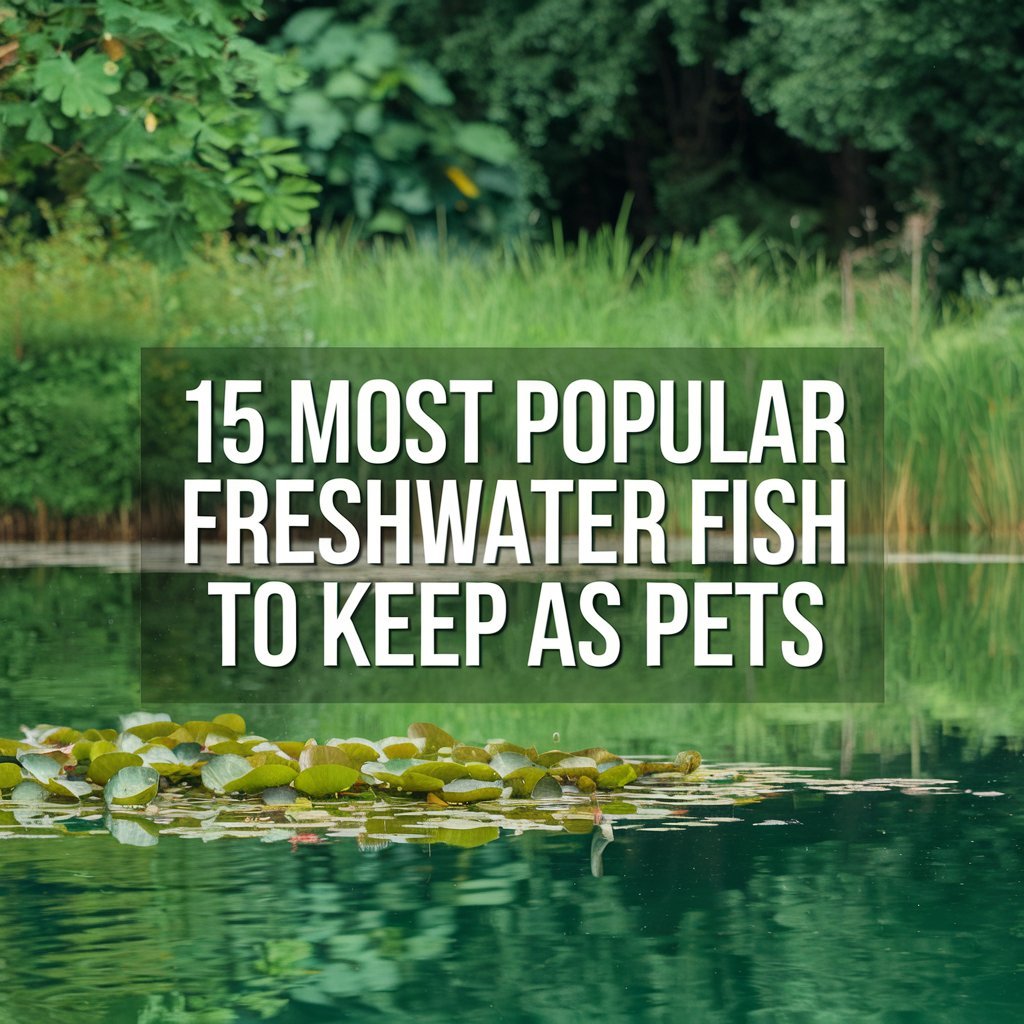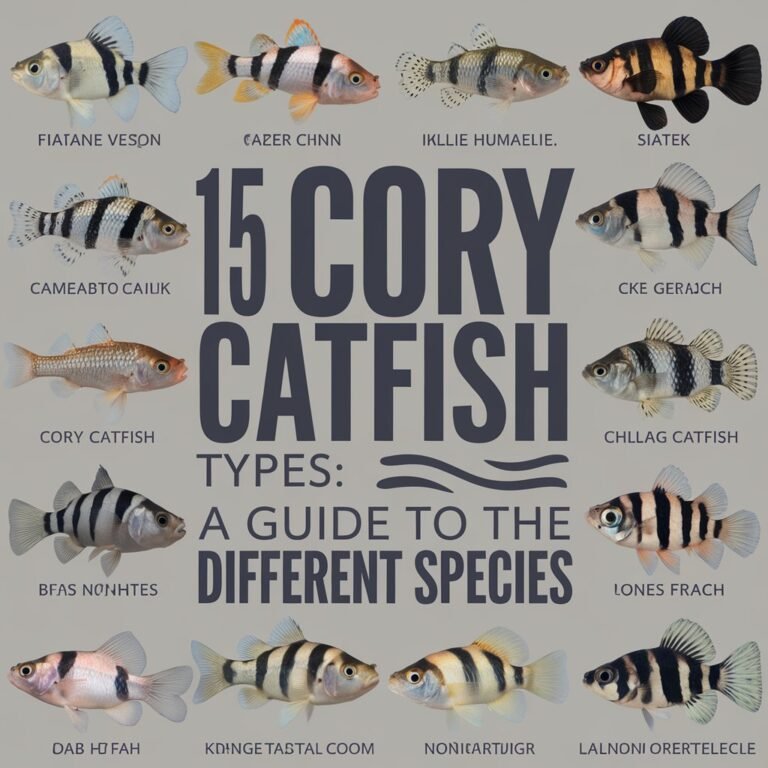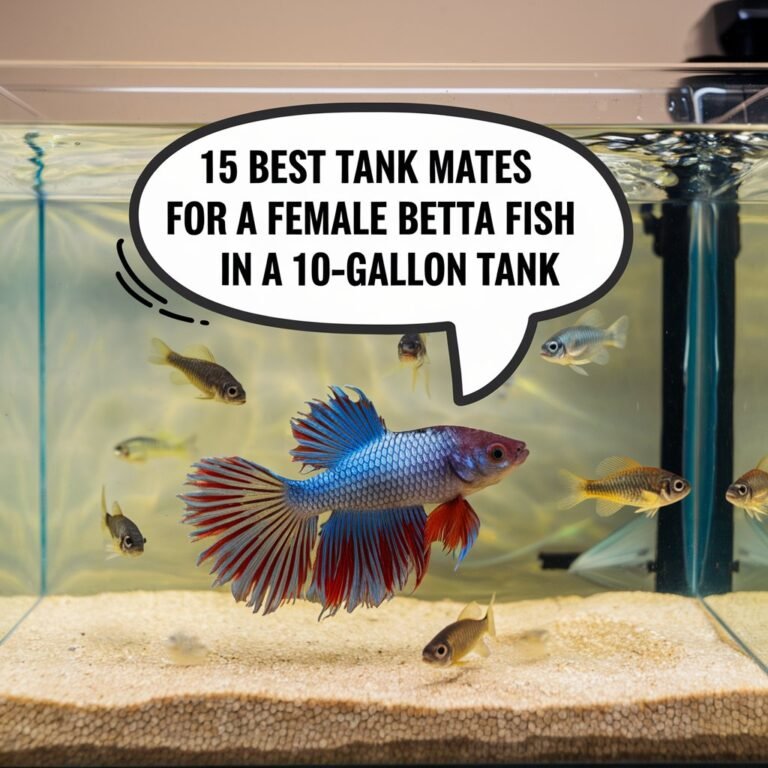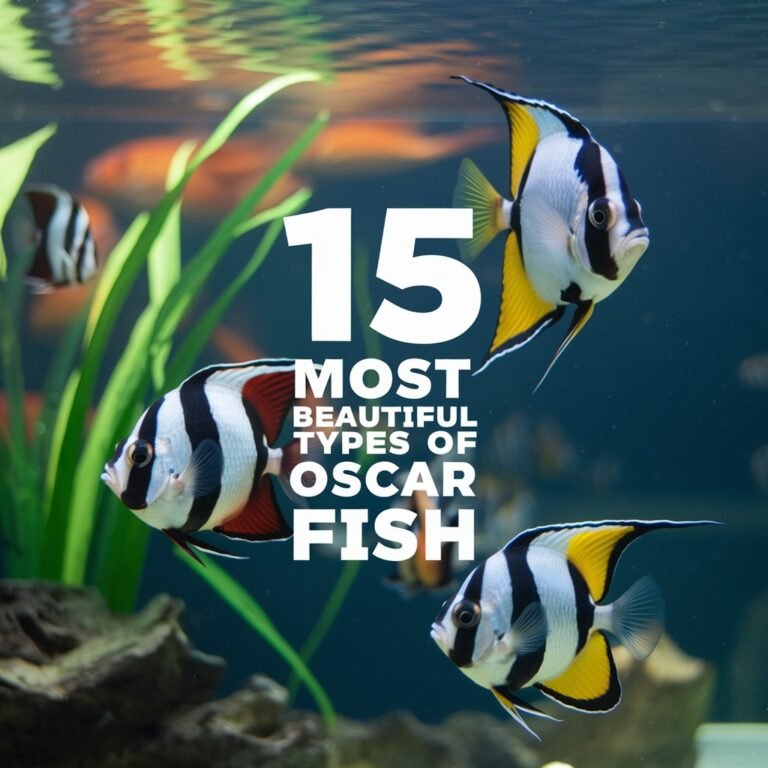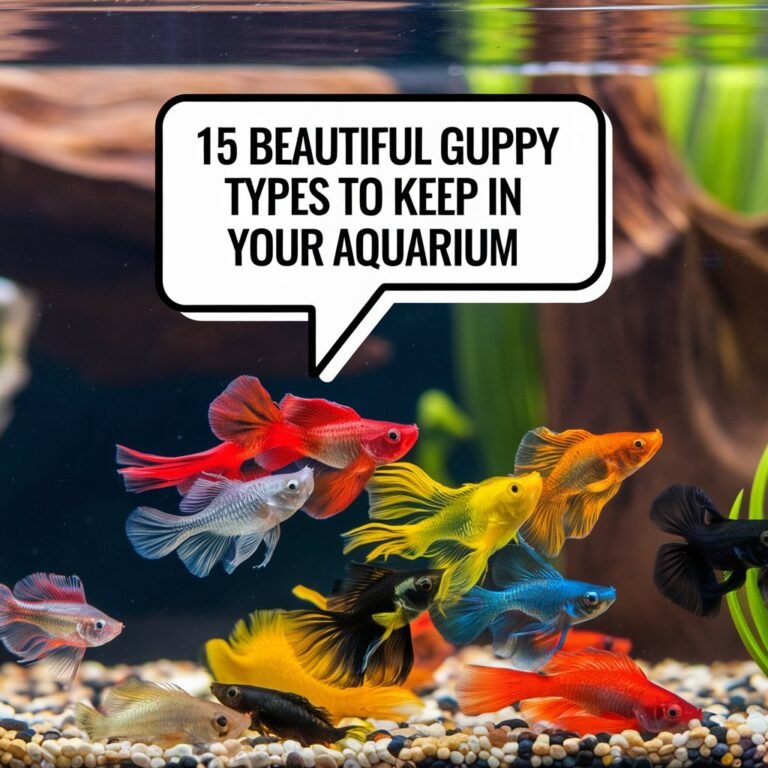15 Most Popular Freshwater Fish to Keep as Pets
You’re considering adding a freshwater aquarium to your home, but with so many species to choose from, it can be overwhelming. You want fish that are not only visually stunning but also easy to care for and compatible with your lifestyle.
Fortunately, there are several popular freshwater fish that fit the bill. From the vibrant colors of Guppies and Neon Tetras to the majestic Discus Fish and Angelfish, there’s a species to suit every taste. But which ones are the best for you? Let’s take a closer look at the top 15 most popular freshwater fish to keep as pets in 2024.
In A Nutshell

- Neon Tetras and Lemon Tetras are popular community fish that thrive in well-planted aquariums with slightly acidic water.
- Guppies, Platies, and Swordtails are colorful, peaceful fish ideal for beginners, requiring proper care and a 10-gallon tank.
- Corydoras Catfish and Kuhli Loaches are peaceful bottom-dwellers that require specific water conditions and a sandy substrate.
- Discus Fish and Angelfish Species are large, peaceful fish that need a spacious tank with regular water changes and a pH range of 6.0-7.0.
- Betta Fish require a minimum 5-gallon tank, stable water conditions, and a temperature range of 76-82°F to keep them happy and healthy.
Guppies
Considering their vibrant colors and peaceful nature, guppies are an ideal choice for beginners looking to start a freshwater aquarium.
You’ll find that guppies are relatively easy to care for and can thrive in a well-maintained tank. When setting up a guppy tank, crucially, you must choose a suitable location with stable water temperatures between 72°F and 82°F.
A 10-gallon tank is a good starting point, as it provides ample space for your guppies to swim and grow.
To create a thriving environment, you’ll need to include plants, substrate, and decorations that provide hiding places and visual interest.
Guppies are prolific breeders, and if you’re interested in breeding them, you’ll need to separate males and females to control the breeding process.
Guppy breeding techniques involve selecting healthy, vibrant individuals with desirable traits and providing them with a suitable environment.
By following established guppy breeding techniques and maintaining a well-balanced tank setup, you can successfully raise and care for these beautiful fish.
With proper care and attention, your guppies will thrive and bring joy and beauty to your aquarium.
Neon Tetras
If you’re looking to add some movement and visual interest to your freshwater aquarium, neon tetras are an excellent choice. These small, schooling fish are native to South America and thrive in groups of six or more.
When it comes to neon tetra care, they prefer soft, slightly acidic water with temperatures between 72-82°F (22-28°C). A well-planted aquarium with plenty of hiding places will help them feel secure.
Neon tetras are relatively low-maintenance pets, but they do require regular water changes and a balanced diet.
They’re omnivores and will eat a variety of foods, including flakes, pellets, and live or frozen foods.
Neon tetra breeding can be a bit challenging, but it’s possible with the right conditions.
They’re egg-layers, and the female will scatter her eggs among plants or other decorations.
The eggs will hatch after 24 hours, and the fry will be ready to eat after a few days.
With proper care and attention, neon tetras can live for up to 5-7 years in captivity, making them a great choice for aquarium enthusiasts.
Betta Fish
Maintaining the right environment is key to keeping betta fish happy and healthy in your aquarium.
When setting up a betta fish tank, you’ll want to prioritize a few essential elements. First, choose a tank that’s at least 5 gallons in size to provide your betta with ample space to swim.
Next, select a high-quality filter that can maintain stable water conditions. Betta fish prefer warm water, so you’ll also need a heater to keep the temperature between 76-82°F (24-28°C).
In terms of betta fish care, regular water changes are vital to prevent the buildup of toxins. You should aim to change 25-50% of the tank water every week.
Additionally, provide your betta with a balanced diet that includes a mix of pellets, flakes, and live or frozen foods. Avoid overfeeding, as this can lead to digestive issues.
Finally, create a visually stimulating environment by adding plants, rocks, and other decorations to the tank.
Goldfish Varieties
Goldfish have been a staple of home aquariums for centuries, and their incredible diversity has led to the development of many unique varieties.
You can choose from a range of Goldfish types, including Common, Shubunkin, Fantail, Black Moor, and Veiltail. Each variety has its own distinct characteristics, such as fin shape, body color, and size.
If you’re interested in learning more about Goldfish breeding, you’ll find that many breeders focus on creating new and exciting varieties.
When it comes to caring for your Goldfish, you’ll want to prioritize their nutrition. Goldfish are omnivores, which means they require a balanced diet that includes a mix of plant and animal matter.
You can provide them with high-quality commercial Goldfish food, as well as supplement their diet with live or frozen foods like brine shrimp or bloodworms.
With proper care and nutrition, your Goldfish can thrive and live for up to 10 years.
By understanding the needs of your Goldfish and providing them with the right environment and care, you can create a happy and healthy home for your aquatic pets.
This will help you build a strong bond with your Goldfish and enjoy their unique personalities.
Harlequin Rasboras
The Harlequin Rasbora, a popular freshwater fish, is an excellent choice for community aquariums.
If you’re considering adding these active swimmers to your tank, you’ll want to create a suitable environment that mimics their natural Harlequin rasbora habitat. These fish thrive in warm, well-oxygenated water with a pH between 6.0 and 7.0 and a temperature range of 72-82°F (22-28°C).
To provide a comfortable environment, include plants with dense foliage and plenty of open swimming space.
You’ll also want to include some hiding places, such as rocks or driftwood, to help your Harlequin Rasboras feel secure.
In the wild, Harlequin Rasboras feed on small insects and plankton, so you’ll want to replicate this Harlequin rasbora diet in your tank.
Offer a varied diet that includes high-quality commercial flake or pellet food, as well as live or frozen brine shrimp, daphnia, or bloodworms.
With proper care and attention, Harlequin Rasboras can live up to 5-7 years in captivity, making them a wonderful addition to your community aquarium.
Dwarf Gouramis
If you’re looking to add a unique and dynamic element to your community aquarium, Dwarf Gouramis are an excellent choice.
These small, peaceful fish are easy to care for and can thrive in a well-maintained tank. When it comes to creating a Dwarf gourami habitat, you’ll want to focus on providing plenty of hiding places and plants to help them feel secure.
A tank with a minimum capacity of 10 gallons is recommended, with a temperature range of 72-82°F (22-28°C) and a pH range of 6.8-8.5.
In terms of the Dwarf gourami diet, you’ll want to provide a balanced mix of plant and animal matter.
They’re omnivores and will happily feed on a variety of foods, including high-quality commercial flakes, pellets, and frozen or live treats. You can also supplement their diet with vegetables like zucchini and peas.
Be sure to vary their diet regularly to guarantee they receive a broad range of nutrients.
With proper care and attention, Dwarf Gouramis can live for up to 4-6 years, making them a great addition to your community aquarium.
Mollies and Guppies
How do you choose between two popular freshwater fish that are known for their vibrant colors and lively personalities – Mollies and Guppies? Both species have gained immense popularity among aquarium enthusiasts due to their striking appearance and relatively low-maintenance care.
Mollies are known for their distinct behavior patterns, often displaying a mix of social and solitary behaviors.
They’re generally peaceful and can thrive in small schools, but may also exhibit territorial tendencies.
As a Molly owner, you can expect to see your fish swimming actively around the aquarium, often near the surface or mid-water.
In contrast, Guppies are renowned for their stunning color variations, with a wide range of patterns and hues available.
They’re generally peaceful and easy to care for, making them an excellent choice for beginners.
Guppies are also prolific breeders, and their vibrant colors can add a pop of excitement to your aquarium.
When choosing between Mollies and Guppies, consider your desired level of social interaction and the overall aesthetic you want to achieve in your aquarium.
Zebra Danios
Zebra Danios offer a unique alternative to the vibrant colors of Mollies and Guppies, with their striking horizontal stripes and energetic behavior.
They’re a great choice for you if you want a low-maintenance, hardy fish that’s easy to care for. Zebra danio care involves keeping them in schools of at least 6-10 individuals, as they’re a social species that thrive in the company of others.
They’re active swimmers, so you’ll need a tank with plenty of space for them to move around. A well-planted tank with open swimming areas is ideal for Zebra Danios.
They’re tolerant of a range of water conditions, but you should still aim to maintain good water quality through regular water changes and a balanced diet.
When it comes to Zebra danio breeding, it’s a relatively straightforward process. They’re egg-layers, and you can breed them in a separate tank with a shallow water level and plenty of hiding places for the eggs.
With proper care and attention, Zebra Danios can live for up to 5 years, making them a great choice for you if you’re looking for a long-term companion.
Platies and Swordtails
Among the most recognizable and popular freshwater aquarium fish, Platies and Swordtails stand out for their vibrant colors and lively demeanor.
You’ll love the variety of colors these fish come in, with Platies displaying shades of blue, yellow, red, and purple, while Swordtails show off their vibrant tails in shades of red, blue, and yellow.
Both species exhibit striking color variations that make them a beautiful addition to your aquarium.
As a beginner, you’ll appreciate the ease of caring for Platies and Swordtails.
They thrive in well-maintained aquariums with temperatures ranging from 72°F to 82°F and pH levels between 6.8 and 8.5.
These fish are also easy to feed, accepting a variety of flake and pellet foods.
When it comes to breeding, Platies and Swordtails are prolific.
They’re livebearers, which means they give birth to live young rather than laying eggs.
You can encourage breeding by maintaining a separate breeding tank with plenty of hiding places and a balanced diet.
With proper care, you can expect a successful spawning, and soon you’ll have a school of Platies or Swordtails swimming in your aquarium.
Corydoras Catfish
Corydoras Catfish, commonly known as Cory Cats or Corys, are an excellent choice for community aquariums due to their peaceful nature and unique appearance.
You’ll find them thriving in a well-maintained tank with a sandy or smooth substrate, as they’re sensitive to rough surfaces.
When it comes to Corydoras habitat, they prefer a slightly acidic to neutral water pH, ranging from 6.0 to 7.0, and temperatures between 68°F and 78°F.
To keep your Corydoras Catfish happy and healthy, you’ll want to replicate their natural diet.
Corydoras diet consists mainly of small invertebrates, such as crustaceans, insects, and worms.
You can supplement their diet with high-quality commercial pellets or flakes, but also provide them with live or frozen foods like brine shrimp or bloodworms.
It’s vital to feed them a varied diet to guarantee they’re receiving all the necessary nutrients.
Lemon Tetras
You’re likely no stranger to Lemon Tetras if you’re a seasoned aquarium enthusiast. These small, peaceful fish have been a staple in the aquarium hobby for decades.
Native to South America, Lemon Tetras are known for their bright yellow color and iridescent blue stripes. They’re a schooling fish, so it’s best to keep them in groups of at least six to mimic their natural behavior.
When it comes to Lemon tetra care, they’re relatively easy to care for. They thrive in soft, slightly acidic water with temperatures between 72-82°F (22-28°C).
A well-planted tank with plenty of hiding places will help them feel secure. Lemon Tetras are omnivores and will eat a variety of foods, including flakes, pellets, and live or frozen foods.
In terms of Lemon tetra behavior, they’re active swimmers and can be quite entertaining to watch. They’re also known to be curious and will often explore their surroundings.
With proper care and attention, Lemon Tetras can live for up to five years in captivity, making them a great choice for aquarium enthusiasts of all levels.
Silver Dollar Fish
Several species of Silver Dollar Fish are popular freshwater aquarium fish, but the most common is Metynnis hypsauchen.
If you’re considering adding them to your aquarium, you’ll want to know that they can grow up to 6-8 inches in length, which is roughly the size of a silver dollar coin.
They require a lot of space to swim, so a large tank with a capacity of at least 125 gallons is recommended.
When it comes to their habitat, Silver Dollar Fish prefer soft, slightly acidic water with temperatures between 72-82°F.
They thrive in a well-planted aquarium with plenty of hiding places and open swimming areas.
You’ll want to include plants like Amazon swordplants and Java moss to create a natural environment.
In their natural habitat, Silver Dollar Fish inhabit slow-moving rivers and streams, so you’ll want to replicate this by creating a gentle water flow in your aquarium.
Kuhli Loaches
Aquatic diversity brings numerous options for freshwater aquarium enthusiasts, and Kuhli Loaches are a unique and intriguing choice.
You’ll find that these nocturnal bottom-dwellers thrive in specific conditions, making them a great fit for experienced aquarists.
When it comes to Loach behavior patterns, Kuhli Loaches are generally shy and solitary, often hiding during the day and emerging at night to forage for food.
To create a suitable environment, you’ll need to replicate their natural Kuhli habitat requirements.
This includes a spacious tank with plenty of hiding places, such as plants, rocks, and driftwood.
A sandy or smooth substrate is also essential, as Kuhli Loaches are prone to digging and can be injured by rough surfaces.
Water parameters should be maintained within a specific range, with temperatures between 75-85°F (24-29°C) and pH levels between 6.0-7.5.
By providing the right conditions, you can encourage your Kuhli Loaches to thrive and enjoy their unique behavior patterns.
With proper care, these fascinating creatures can become a rewarding addition to your aquarium.
Discus Fish
A discus fish’s striking appearance and peaceful nature make it a sought-after addition to many freshwater aquariums.
You’ll love their majestic appearance, with vibrant colors and long, flowing fins. If you’re considering adding discus fish to your aquarium, vital understanding of their care requirements is paramount.
Discus care tips include providing a spacious tank with plenty of hiding places and a temperature range of 82-86°F (28-30°C). Water quality is also pivotal, with regular water changes and a pH range of 6.0-7.0.
When it comes to diet, discus fish are omnivores and require a varied diet that includes high-quality commercial pellets, frozen foods, and live foods.
You’ll also want to guarantee that your tank is well-planted, as discus fish use plants for shelter and food.
If you’re interested in breeding discus fish, mastering discus breeding secrets is vital, such as providing a separate breeding tank and a varied diet that includes live foods.
With proper care and attention, discus fish can thrive in your aquarium, providing a beautiful and peaceful addition to your underwater community.
Angelfish Species
If you’ve been captivated by the majestic discus fish, you may also appreciate the angelfish species, with their striking appearance and unique characteristics.
Angelfish are native to South America, specifically the Amazon and Orinoco river basins, and are known for their long, flowing fins and vibrant colors. With proper care, they can thrive in a well-maintained aquarium, growing up to 6 inches in length.
When considering angelfish as pets, it’s crucial to research their specific needs.
Angelfish breeding can be challenging, as they require a separate breeding tank with specific water parameters. They’re also prone to angelfish diseases such as ich, fin rot, and bacterial infections, which can be treated with medication and proper water maintenance.
Angelfish are generally peaceful, but they can be territorial and require a spacious tank with plenty of hiding places.
A minimum tank size of 20 gallons is recommended, with plenty of plants and open swimming space. With proper care and attention, angelfish can make beautiful and fascinating additions to your aquarium, providing hours of entertainment and companionship.
Frequently Asked Questions
Can I Keep Multiple Male Freshwater Fish Together in a Tank?
You’re considering keeping multiple male freshwater fish together, but be aware that this can lead to aggressive behavior as they establish a social hierarchy, so choose species wisely and provide ample space to reduce conflicts.
What Is the Ideal Ph Range for a Freshwater Aquarium?
You’ll want to maintain a pH range of 6.5-8.5 in your freshwater aquarium, as most fish thrive within this balance. Regular pH balancing and monitoring of water hardness will guarantee a healthy environment for your aquatic community.
How Often Should I Change the Aquarium Water Completely?
You shouldn’t change the aquarium water completely, as it disrupts the cycling process. Instead, perform regular partial water changes (25-50% every 1-4 weeks) to maintain ideal water quality and a stable environment for your aquatic life.
Can I Keep Freshwater Fish With Other Aquatic Animals?
When choosing aquatic companions, you’re creating a harmonious environment for peaceful coexistence. Research the needs and temperaments of various species to guarantee compatibility with your freshwater fish, promoting a thriving and balanced aquarium community.
What Type of Substrate Is Best for a Freshwater Aquarium?
When setting up your freshwater aquarium, you’re choosing between gravel and sand substrates. Gravel offers benefits like good filtration and ease of cleaning, while sand provides alternatives with unique aesthetics and natural habitats.
FInal Verdict
You now have a solid foundation for selecting the perfect freshwater fish for your aquarium. From the low-maintenance Guppies and Neon Tetras to the more exotic Discus Fish and Angelfish Species, there’s a species to suit every level of expertise.
By choosing the right fish for your tank’s conditions and your personal preferences, you’ll be well on your way to creating a thriving underwater community that brings you joy for years to come.


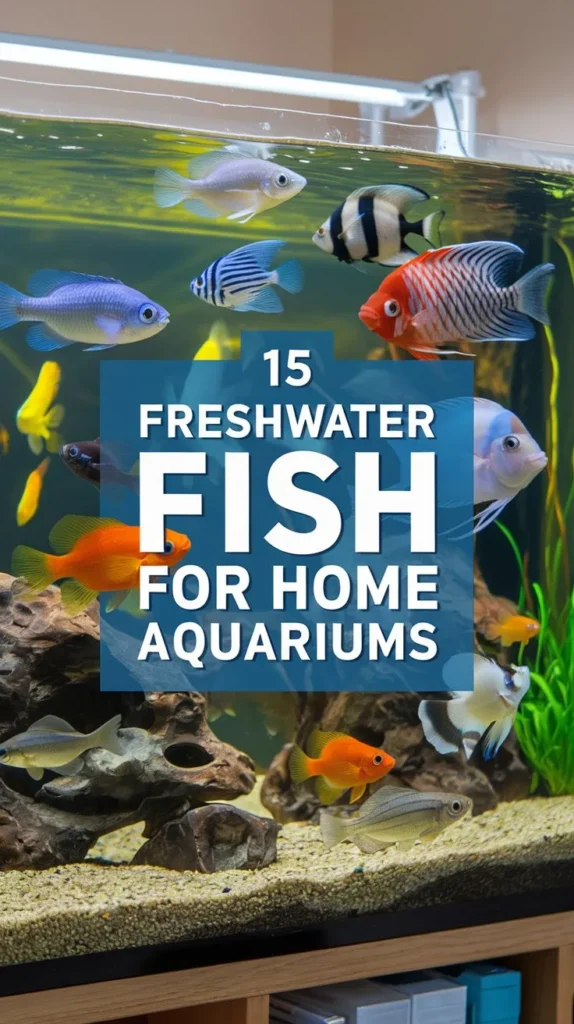

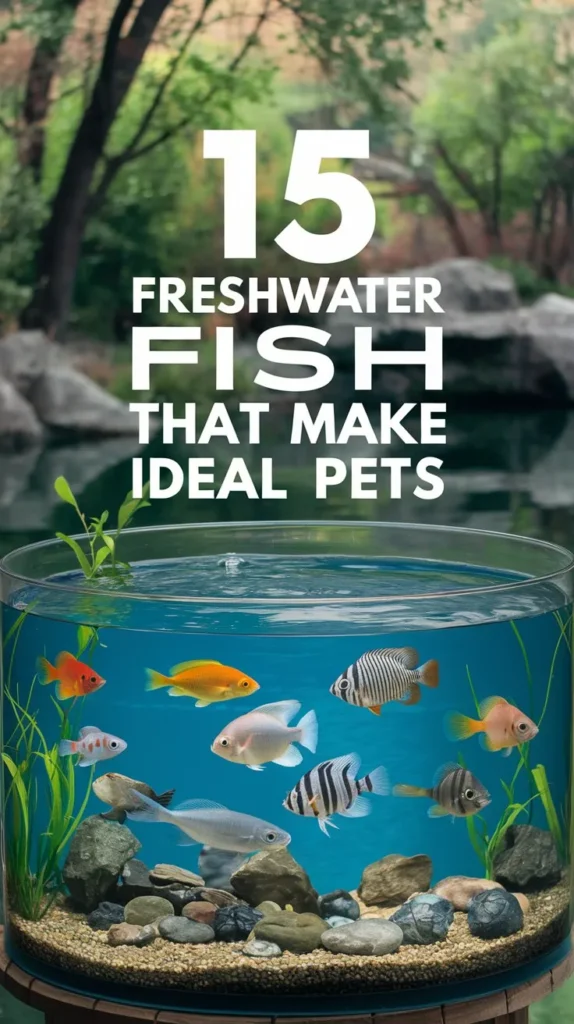
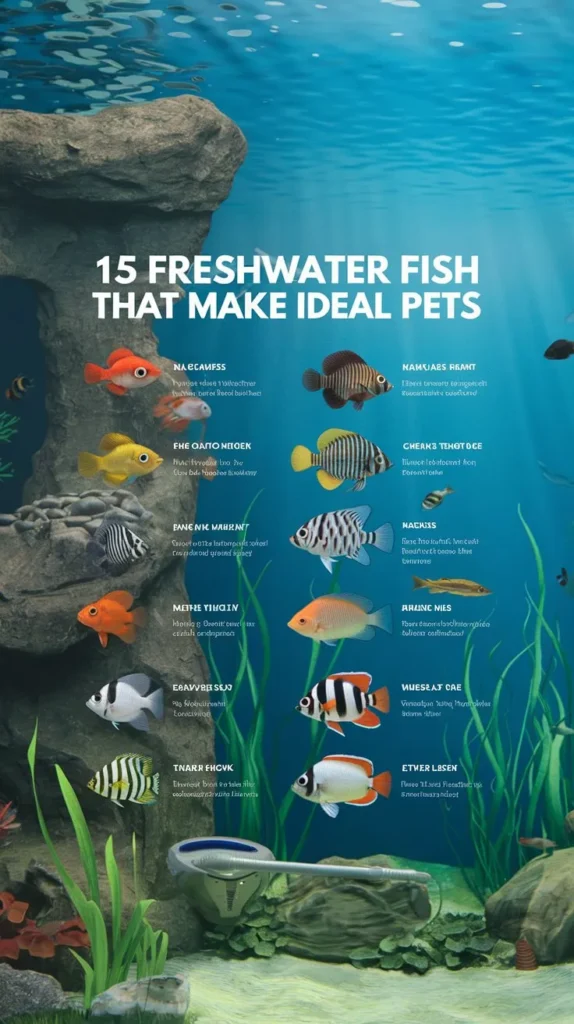



Hello, I’m Aria Cooper, the heart and soul behind Swimmy Buddies. As a devoted fish aficionado, I share my aquatic adventures and expertise to inspire your own underwater explorations. 🐠🌊

